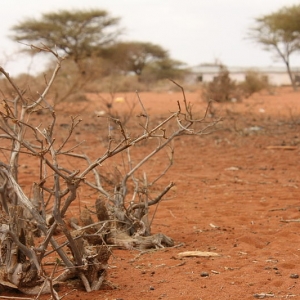Welcome to “What’s Up With Water,” your need-to-know news of the world’s water from Circle of Blue. I’m Eileen Wray-McCann.
In South Africa, garbage and high levels of bacteria are contaminating the country’s rivers, and environmental activists are struggling to hold government officials accountable. That’s according to the Daily Maverick, a news group that says that local and federal agencies often blame each other, or simply downplay the urgency of the contamination, making it hard to hold any one agency responsible. However, even the South African government’s own data points to a disaster. A 2018 government report found that between 1999 and 2011, the number of South African rivers in poor ecological health increased by 500 percent. A number of rivers were considered past the point of revival. Recent water tests in some of South Africa’s northern rivers showed E. coli counts that were millions of times above safe levels.
In the Middle East, Israel and Jordan have signed an agreement extending their long record of water cooperation. AFP reports that Israel will double the amount of fresh water that it sells to Jordan, a neighbor that is one of the most water-scarce countries on the planet. The agreement stems from a change in Israeli government. Naftali Bennett, who became prime minister in June, wants to mend relations with Jordan, after they languished under the leadership of Benjamin Netanyahu. Israel and Jordan signed a peace agreement in 1994.
In China, yet another province has been hit by major flooding. This time the damage is in Shanxi, a province west of Beijing that is China’s largest coal producer. The floods displaced more than 120,000 people and affected nearly 2 million, according to Aljazeera. Three month’s worth of rain fell in a mere five days. Sixty coal mines in the region suspended operations, even as China suffers from electricity shortfalls and rising energy prices. The floods in Shanxi come three months after an historic deluge in southern China. In July, storms in Henan province killed more than 300 people.
In the United States, flooding is also a threat, and a new study has identified major infrastructure systems that are vulnerable to rising waters. The research group First Street Foundation analyzed the 30-year flood risk for every U.S. city and county. The results show that flood risks are widespread. Nearly 25 percent of roads, hospitals, power stations, water treatment facilities and other infrastructure are susceptible to failure from high waters. The study found that the states facing the greatest flood challenges are Louisiana, Florida, Kentucky and West Virginia. According to the report, Louisiana is home to six of the nation’s most vulnerable counties.
And that’s “What’s Up With Water,” from Circle of Blue, where water speaks. More water news and analysis await you at
circleofblue.org. This is Eileen Wray-McCann – thanks for being here.






